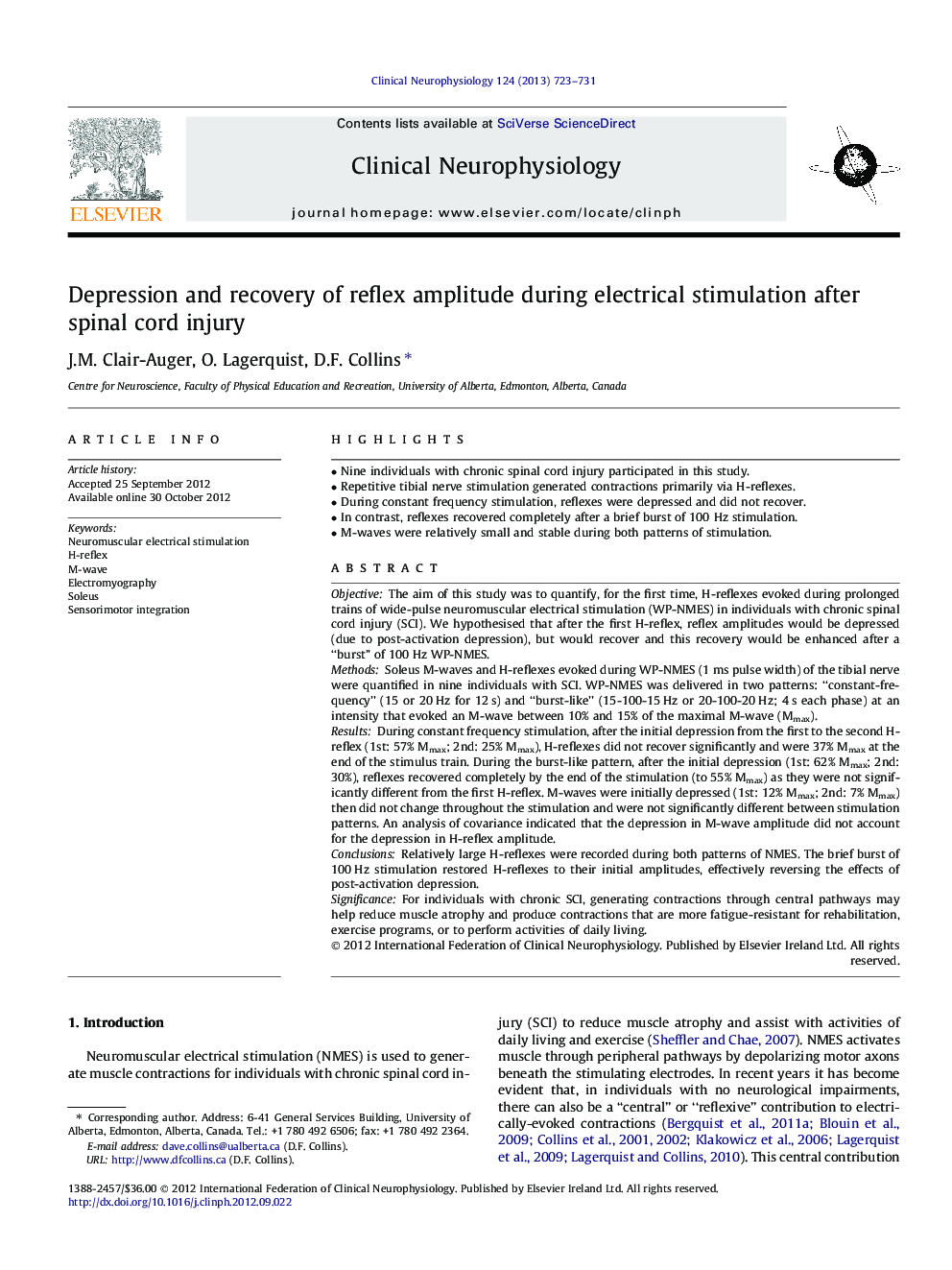| Article ID | Journal | Published Year | Pages | File Type |
|---|---|---|---|---|
| 3044182 | Clinical Neurophysiology | 2013 | 9 Pages |
ObjectiveThe aim of this study was to quantify, for the first time, H-reflexes evoked during prolonged trains of wide-pulse neuromuscular electrical stimulation (WP-NMES) in individuals with chronic spinal cord injury (SCI). We hypothesised that after the first H-reflex, reflex amplitudes would be depressed (due to post-activation depression), but would recover and this recovery would be enhanced after a “burst” of 100 Hz WP-NMES.MethodsSoleus M-waves and H-reflexes evoked during WP-NMES (1 ms pulse width) of the tibial nerve were quantified in nine individuals with SCI. WP-NMES was delivered in two patterns: “constant-frequency” (15 or 20 Hz for 12 s) and “burst-like” (15-100-15 Hz or 20-100-20 Hz; 4 s each phase) at an intensity that evoked an M-wave between 10% and 15% of the maximal M-wave (Mmax).ResultsDuring constant frequency stimulation, after the initial depression from the first to the second H-reflex (1st: 57% Mmax; 2nd: 25% Mmax), H-reflexes did not recover significantly and were 37% Mmax at the end of the stimulus train. During the burst-like pattern, after the initial depression (1st: 62% Mmax; 2nd: 30%), reflexes recovered completely by the end of the stimulation (to 55% Mmax) as they were not significantly different from the first H-reflex. M-waves were initially depressed (1st: 12% Mmax; 2nd: 7% Mmax) then did not change throughout the stimulation and were not significantly different between stimulation patterns. An analysis of covariance indicated that the depression in M-wave amplitude did not account for the depression in H-reflex amplitude.ConclusionsRelatively large H-reflexes were recorded during both patterns of NMES. The brief burst of 100 Hz stimulation restored H-reflexes to their initial amplitudes, effectively reversing the effects of post-activation depression.SignificanceFor individuals with chronic SCI, generating contractions through central pathways may help reduce muscle atrophy and produce contractions that are more fatigue-resistant for rehabilitation, exercise programs, or to perform activities of daily living.
► Nine individuals with chronic spinal cord injury participated in this study. ► Repetitive tibial nerve stimulation generated contractions primarily via H-reflexes. ► During constant frequency stimulation, reflexes were depressed and did not recover. ► In contrast, reflexes recovered completely after a brief burst of 100 Hz stimulation. ► M-waves were relatively small and stable during both patterns of stimulation.
